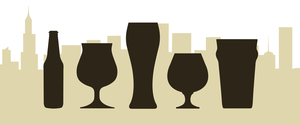Divvy Traffic Patterns
April 4, 2014
I had a lot of fun designing my visualization of Divvy traffic patterns and was surprised by what I could learn from it. In my prior post, I discuss the goals of the visualization and the design choices that went into it. In this post, I’ll take you on a few short tours of 4 parts of Chicago to explore how the city varies block by block.
I am curious to know what kinds of stories you can find in the visualization. Please post them in the comments (bonus points for animated gif links)!
Street vs Path
This visualization toggles between three different Divvy stations near the lakefront, some that are further inland and some that are closer to the lake. Biking on city streets is very different than biking on the lakefront path or the park. Stations that are blocks away from one another, on the Lakefront Path or a couple blocks away, show very different trip dispersions. Bikers that start on the path tend to finish on the path. Bikers that start off the path go all over.
One plausible explanation for this pattern on the lakefront is that people tend to the lakefront if they start there. Bikers that start biking next to the street are more likely / willing to finish on a street station, presumably because they’re accustomed to biking next to cars. There are other hypotheses that could also explain these different geographic patterns -- for example, if the lakefront trips are “leisurely” (on the weekend perhaps?) or done by non-subscribers (tourists?) these could also be factors.
Bike Lane vs No Bike Lane: Up and Down Chicago Avenue
Just like biking on city streets is different than biking on a path; biking on a city street with a bike lane is very different than biking on a street with no bike lane. Damen Ave doesn’t have a train line going up and down it. It does have a bike path. This makes that street a prime candidate for public transit biking, and indeed the map shows that.
In this visualization, we shift the focus back and forth along Chicago avenue. Most of the trips from the Damen & Chicago station are riders traveling either up or down Damen. Some of the riders go all the way from Bridgeport to Wicker Park! Importantly, these two neighborhoods are far from public transit but pretty close via Divvy. As we move our focus East along Chicago, though, we see different patterns. On this 1 mile stretch of Chicago from Damen to Noble, the Western tip is a main North-South thoroughfare while the other stations show traffic headed East to the Loop.
To the Train vs Across the City: Down Halsted in Bridgeport
This visualization toggles between 5 Divvy stations throughout Bridgeport, up and down Halsted. For me, there are two things that pop visually in this animation. The first is that from the Orange line station at Archer & Halsted, Divvy trips are all pretty close -- they more or less are trips within Bridgeport. Riders originating from the Orange Line stop at Halsted & Archer are likely coming from a great distance and taking the Divvy as their “last mile of public transit”, a stated goal of Divvy. The second interesting point is that, for surrounding stations, the bulk of trips actually arrive at that same Orange Line stop at Halsted & Archer, leading us to believe that this is the start of a commute for riders.
Note that there are 35 trips that start and stop at the Orange Line station. It seems unlikely that these would be intentional; a more likely explanation is that the adjacent stations were full and the riders were forced to turn around (Full disclosure: this happened to me yesterday). It might be interesting to explore the correlation between trips that start and stop in the same location when adjacent stations are empty or full (excluding the Loop/Lakefront).
In Bridgeport, riders close to the Halsted & Ashland Orange Line are using Divvy to get to and from the El station. This pattern seems to hold until 35th street, where overall usage is much higher. Halsted & 35th St is a much more commercial corner, and seems to differentiate itself in that it is much more often the starting point for Divvy traffic outside the neighborhood, to the loop and beyond. In the residential parts of Bridgeport, there are fewer Divvy trips and they tend to be far more local. This could be related to two different use Divvy use-cases. Short inner-neighborhood trips (especially to an El station) are pretty markedly different than longer Divvy trips to and from commercial locations.
Neighborhood Borders: In and Out of Hyde Park
Hyde Park has long been talked about (perhaps problematically) as a bubble on the South Side. Here are three stations that are a few blocks away from one another. One station is right outside one of Hyde Park’s revered beer halls (the bar formerly known as Jimmy’s Tap). As you can see, the most common trip from Jimmy’s Tap goes straight to the University of Chicago library.
Just a few blocks North, however, where few students live and which is also exactly on the border as defined by University of Chicago social scientists decades ago, there is very little traffic to the rest of Hyde Park. This then would seem to confirm Cottage Grove as a border -- which is probably expected by people who live in the area.

